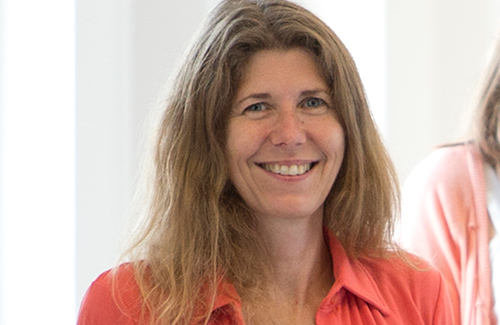“What happens when there’s a nuclear attack-the public, the government, the military all want an answer yesterday about who is responsible. We need answers right away. If we can reduce a five to six day turnaround, I call that significant progress,” says Auxier.
Research Highlight: John Auxier II
Faculty Profile: Claudia Rawn
Whether it is teaching a classroom of students, working on cutting-edge projects in a laboratory, mentoring young potential engineers, or helming a Tickle College of Engineering (TCE) research center, Dr. Claudia Rawn, a University of Tennessee–Oak Ridge National Laboratory (ORNL) Joint Faculty member and an assistant professor in the Department of Materials Science and Engineering […]
Research Highlight: Wei He
Wei He, a joint assistant professor in the Departments of Materials Science and Engineering and Mechanical, Aerospace and Biomedical Engineering, is carrying out exciting engineering research on materials-enabled interventions to tackle challenging medical problems. He’s doctorate is in chemistry, but her research has progressed from chemistry to engineering materials to biomedical science. She says that […]
Research Highlight: Ramki Kalyanaraman
In finding the right mix of materials, the UT-led team happened upon an entirely unexpected result—a magnetic material with extremely strong optical interactions that place it under consideration as a metamaterial, meaning a material with properties not found in nature.
Research Highlights: Materials Science & Engineering and Nuclear Engineering
Materials science and engineering and nuclear engineering faculty team up as part of a $30 million consortium sponsored by DOE. Howard Hall, Governor’s Chair for Global Nuclear Security and Professor, nuclear engineering (NE); Research Professor in materials science and engineering (MSE) and Director of the Scintillation Materials Research Center, Chuck Melcher; Jason Hayward, NE Associate […]
Research Highlight: Chuck Melcher
Scintillators are materials that emit light when in the presence of radiation, which makes them a critical component in the detectors used to track potentially illegal transport of radioactive materials.
Research Highlight: Ramki Kalyanaraman and Gerd Duscher
This technology would not only help individuals be more energy independent, but would enable scaling up of light-energy-harvesting products to carpets, curtains, tents, and even textile-based solar farms.
Research Highlight: Claudia Rawn
In 2011, Rawn and her research team won an NSF award for the Research and Instructional Strategies for Engineering Retention (RISER) program. Rawn’s team was selected for its work with female and diverse students. The RISER program supports the goal of NSF’s Science, Technology, Engineering and Mathematics Talent Expansion Program (STEP)—to recruit and retain students in STEM fields.
